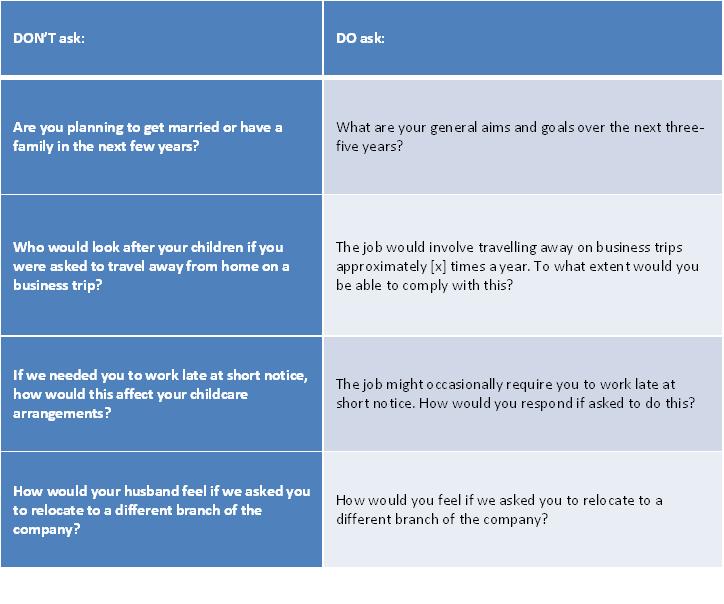The Importance of Developing Recruitment Shortlisting Criteria |
When you need to recruit, do you follow a specific procedure? Do you have effective shortlising criteria? If not, you may end up with problems, waste a lot of time and money or employ the wrong person.
It only takes some simple, common-sense steps to ensure a smooth recruitment process. Read on to find out more about how and why you should develop effective shortlising criteria for successful recruitment drives.
Why should you develop a process?There are four key reasons why you should develop an effective shortlising process for each role, regardless of the size of your business:
Here’s how to do it. First, refer to your job description, person specification and competency profile for each role and list the essential shortlisting criteria, which could include:
When deciding on the ‘essential criteria’, you could also include ‘desirable criteria’. This helps to distinguish between candidates who meet only the essential criteria for the role, and those who offer additional relevant qualities. Asking others to help you develop the shortlisting criteria provides useful discussion to identify ‘essential’ versus ‘desirable’ criteria. Next, assess applications against the shortlisting criteria to screen out unsuitable candidates. Telephone Screening Interviews One screening option is to conduct brief telephone interviews with applicants as a second screening stage, after establishing that candidates satisfy the basic qualifying criteria for the role. Telephone interviews can be time consuming, but are useful for telephone-based roles, such as a call centre adviser, as you have an opportunity to assess applicants’ verbal communication skills. A script setting out what questions to ask will help to ensure consistency across all candidates. You may also want to use a telephone screening interview to establish or confirm any queries you may have on their application and to assess the verbal communication skills of the candidates. At this early selection stage, a 20-minute telephone conversation should be sufficient. The Shortlisting Process – Scoring, Ranking and Weighting The next stage is to shortlist candidates. An assessment form will help the shortlisting panel to record the relevant evidence in support of its decision, and proves you carried out a systematic approach. The categories listed should relate to the shortlisting criteria for the role; for example, qualifications, work experience, level of responsibility, competencies and salary level. Include a section for comments to highlight areas to probe at the next selection stage for shortlisted candidates. A scoring and weighting system helps the shortlisting panel to rank candidates in an objective and consistent manner. Rate each candidate against each category of the criteria using the rating scale 1-5, with 5 indicating that the applicant ‘exceeds requirements’ and 1 indicating that he or she ‘just meets requirements’. Next, apply weighting to your shortlisting criteria by attaching different levels of importance to certain criteria according to its level of relevance to the role. Use a simple 1-3 weighting framework where 3 indicates ‘very important’, 2 indicates ‘important’, and 1 means ‘quite important’. Once candidates have been allocated a total score, they should be ranked in order of their scores. Avoiding Bias and Discrimination in Shortlisting Using appropriate shortlisting criteria helps to avoid bias and discrimination. Without criteria, your organisation may end up with an unsuitable pool of candidates, and claims of discrimination will be harder to defend. To help prevent this, ensure that only relevant information is considered by removing all personal information on CVs and application forms prior to shortlisting. One potential challenge relating to discrimination is length of experience. Asking for a minimum number of years’ experience can lead to age discrimination, as a younger job applicant has not had the opportunity to accrue a specific number of years in a role. Further, shortlisting candidates based on years of experience could mean discriminating against women who took time out to raise children, or applicants who needed time away because of a disability. Therefore, consider what a candidate with the relevant experience should be able to do and define the job requirements in those terms when developing the shortlisting criteria. And finally, to prevent bias and discrimination, avoid making assumptions! The shortlisting process should consider the evidence supplied by a candidate to demonstrate how they meet the shortlisting criteria – don’t make assumptions not based on factual evidence. |
Register Now for the Autumn Employment Law Update Workshop!If 25 October 2018 isn’t in your diary already, put it in now! Not only will you be able to learn about the latest changes in Employment Law, but you will also benefit from hearing Jenny Collis, of Fit&Able, speak about keeping your employees healthy at work. Back and neck pain, and upper limb symptoms are the most reported musculoskeletal complaints in the workplace. As an Occupational Health Physiotherapist, Jenny will highlight the most common complaints, review your employer’s obligations and provide strategies and solutions for management in the workplace. This is one not to be missed. Running from 9.30am to 1pm, the venue is The Meeting Room at Hennerton Golf Club in Wargrave, Berkshire, and the cost is just £20 plus VAT to include refreshments. For more information, click here, or to go direct to our Eventbrite page and book online there. |

